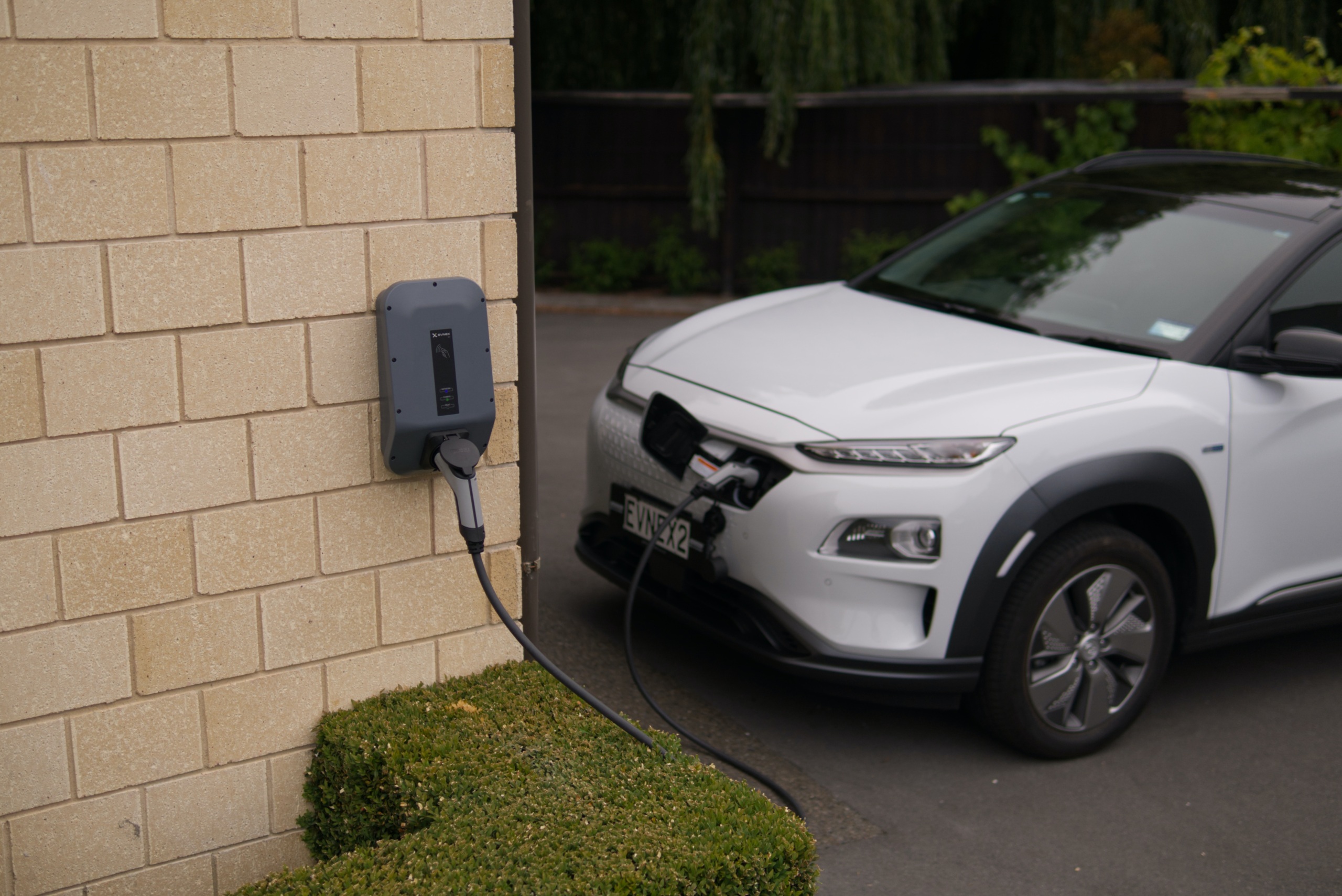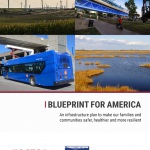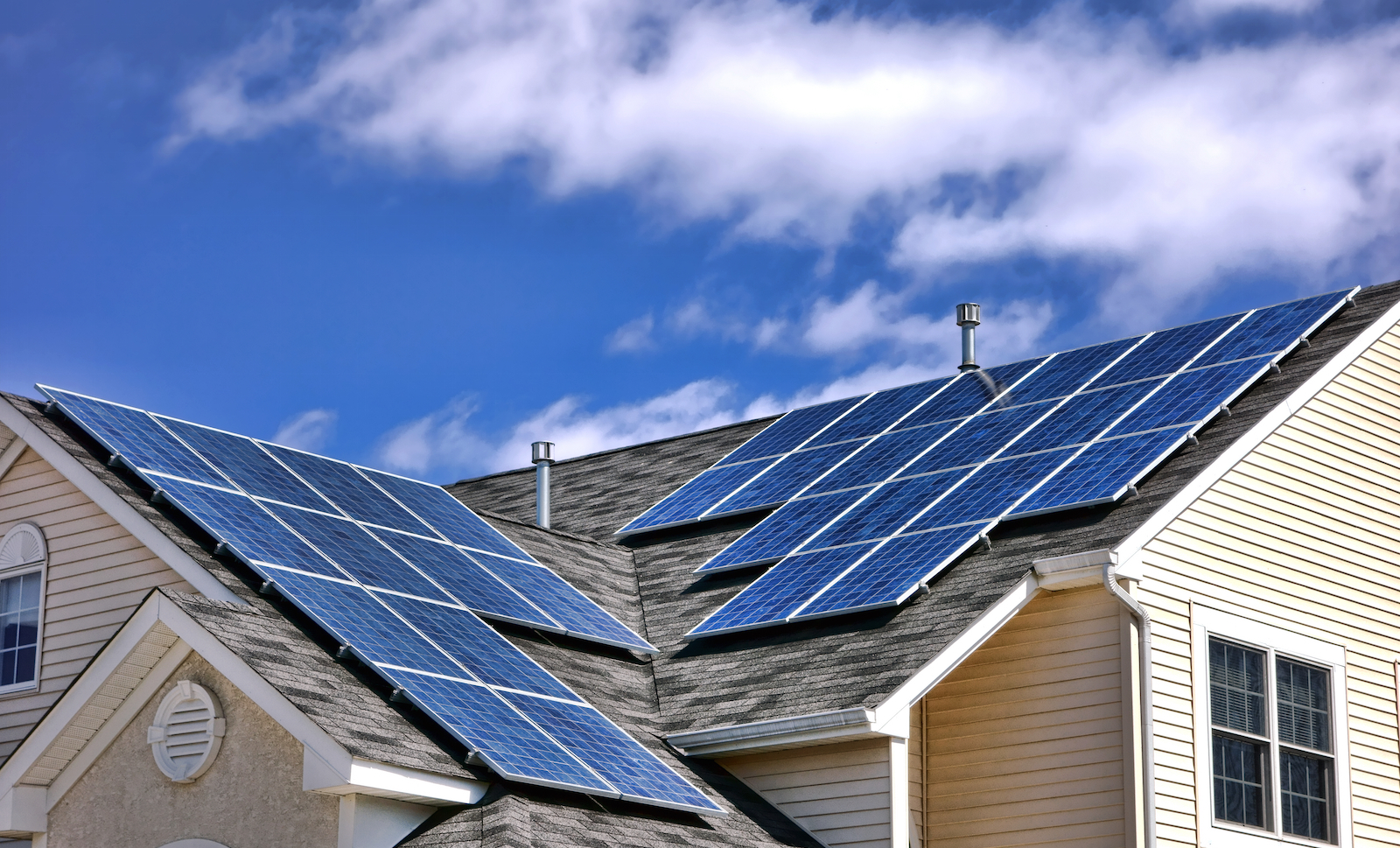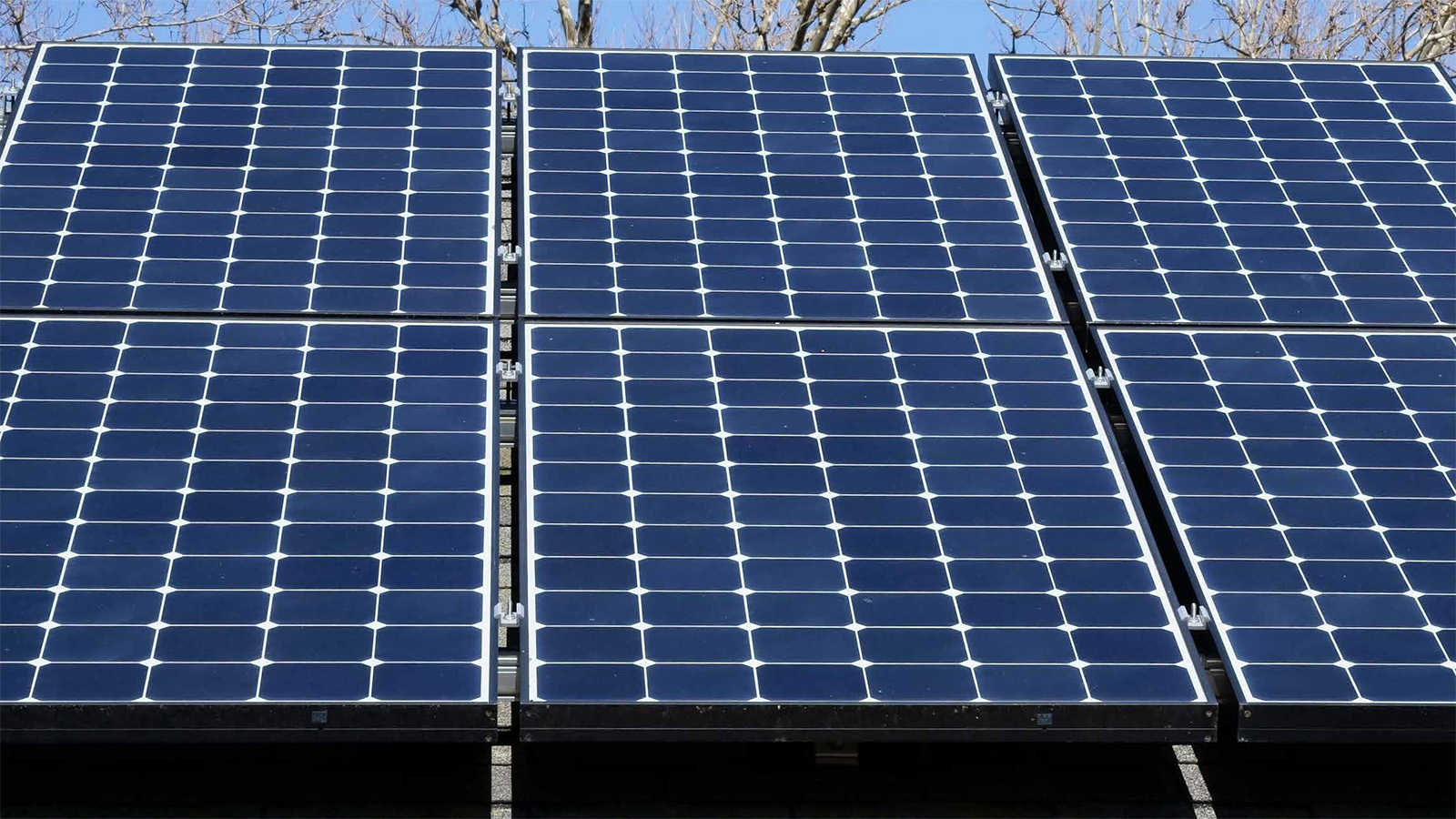
Blueprint for America
An infrastructure plan to make our families and communities safer, healthier and more resilient
Americans agree: Our nation’s infrastructure needs work. This report provides the blueprint that should form the basis of an infrastructure plan that will make America stronger today and lay the foundation for a brighter future.
Downloads
Environment America Research & Policy Center

Executive Summary
Americans agree: Our nation’s infrastructure needs work.
Republicans, Democrats and independents alike all support boosting federal investment in infrastructure.1 A transpartisan effort to rebuild the nation’s infrastructure can help to bring Americans together at a time of increasing polarization and help heal the economic wounds caused by the COVID-19 pandemic.
Throwing money at the problem, however, is not the solution. Nor is rebuilding the same old infrastructure in the same old ways.
A transformative infrastructure plan for the United States must focus on the nation’s key 21st century priorities and use taxpayer resources wisely. It should focus infrastructure investment in ways that will make us healthier and safer, prioritize infrastructure repair, avoid investing in infrastructure likely to become “stranded assets,” and get the most out of every dollar invested by using our infrastructure efficiently.
The following proposals in the areas of energy, transportation, water, solid waste and natural infrastructure should form the basis of an infrastructure plan that will make America stronger today and lay the foundation for a brighter future. (For full list of infrastructure proposals download report.)
Energy: Renewable energy is on the rise across America. But to take full advantage of our enormous potential for clean energy, the nation should prioritize investments and infrastructure including:
- Invest in renewable energy infrastructure by expanding tax credits for wind, solar, and energy storage projects, and by providing at least $7 billion toward Energy Efficiency and Conservation Block Grants to help communities reduce energy use and deploy clean energy projects.2
- Modernize and strengthen the electric grid by funding and incentivizing the deployment of energy storage systems and providing federal loan guarantees for the construction of high-voltage transmission lines. To ensure a resilient grid able to withstand climate change-fueled storms, the federal government should develop strong grid resilience standards, and provide states and communities with resources to strengthen physical grid infrastructure and deploy technologies to respond to grid disruptions.
- Promote domestic manufacturing of clean energy technologies through tax credits for expanding or building manufacturing facilities, as well as for production of clean energy products. The federal government should also develop a national strategy to ensure sufficient and ethical supply of minerals and materials necessary for supporting clean energy manufacturing.
Transportation: America’s roads, bridges and transit systems are in dire need of repair, and the nation’s transportation needs were changing, even before the disruption caused by COVID-19. Infrastructure projects to help build a 21st century transportation system include:
- Repair crumbling roads and bridges and require states to “fix it first” by reorienting transportation funding away from the construction of new and wider highways and toward repair of existing roads and associated infrastructure. States should be required to focus National Highway Performance Program funds on repair and rehabilitation until existing roads and bridges are in a state of good repair.3
- Expand and electrify public transportation beginning with the immediate provision of at least $32 billion in emergency operating support for transit to maintain service in the wake of COVID-related budget shortfalls.4 Then, Congress should address the $98 billion backlog in needed transit repairs, expand transit by increasing funding for Capital Investment Grants, and support community deployment of electric buses with new funding for the Low or No Emissions Vehicle program.5
- Build a national network for electric vehicle charging by providing funds to build out state and regional EV charging networks and corridors, including at rest stops and park-and-rides. Funding should be contingent on stations being publicly accessible, using open and interoperable charging standards, and providing open data so that drivers can find available chargers.
Water: Aging water infrastructure threatens public health and the environment and wastes valuable drinking water. Infrastructure projects to protect our water include:
- Invest in sewage treatment and in “green infrastructure” that limits the flow of polluted runoff into rivers and streams. Congress should provide $6 billion a year in wastewater infrastructure grants, primarily through the Clean Water State Revolving Fund, and should allocate 20% of those funds for green and natural infrastructure projects the U.S. Environmental Protection Agency (EPA) Green Project Reserve.6
- Replace lead service lines to protect Americans, particularly children, from the damaging lifelong health impacts caused by lead exposure. To do so, Congress should invest $4.5 billion per year in drinking water infrastructure grants to fund full lead service line replacement, along with $1 billion per year to help schools replace lead-bearing water fountains and faucets.
- Repair and replace leaky pipes to conserve water by increasing funding for the Drinking Water State Revolving Fund, and ensuring that funds go to projects that conserve water rather than those that increase use by expanding reservoirs or building pipelines to untapped sources.
Solid waste: America faces a waste crisis, with China and other nations rejecting imports of our garbage, recycling systems on the ropes, and plastic pollution piling up in our forests, parks, rivers and ocean waters.7 Federal projects to help communities get on top of the crisis include:
- Support community efforts to reduce waste generation and move toward “zero waste” by providing $250 million in funding for composting infrastructure for food and yard waste, programs to reduce waste, and efforts to promote recycling.
- Help cities and states improve waste infrastructure by ensuring full funding for current programs, such as the U.S. Department of Agriculture’s Solid Waste Management Grants for rural areas and EPA’s Tribal Waste Management Program. Congress should also create new funding opportunities for cities and states to improve their solid waste systems.
- Encourage the purchase of recycled material through incentives and “lead by example” measures. The federal government, which spends more than $500 billion on goods and services each year, can strengthen and expand the market for recycled material by making sustainable purchasing decisions whenever possible.8
Natural infrastructure: America’s wetlands, forests and rivers – our natural infrastructure – provide invaluable benefits like flood protection and cleaner air and water, and are worthy of protection for their own sake. Projects to protect and enhance the value of our natural land include:
- Protect 30% of America’s land area and waterways by 2030 by establishing this goal in Congress and prioritizing the protection of areas with high ecological, biodiversity, and carbon sequestration value.9 The federal government should also build on existing rules, such as the Roadless Area Conservation Rule, to guard against destructive infrastructure on public and undeveloped land.
- Increase climate resilience through a re-established Civilian Conservation Corps, which employed 3 million Americans in the 1930s doing work such as forest management, flood control, and planting more than 3 billion trees.10 A new Corps should be established with a focus on making the nation more resilient in the face of climate change, doing work such as reforestation and restoring other natural areas, and wildfire prevention and response.
- Increase support for watershed and coastal restoration and protection with full funding for programs including the National Oceanic and Atmospheric Administration’s National Estuarine Research Reserve Program, EPA’s National Estuary Program, and the U.S. Fish and Wildlife Service’s Coastal Program.11 Congress should also provide additional resources for states to manage their own watersheds and coastal areas by strengthening the National Coastal Zone Management Program.12
America can also improve all areas of infrastructure by ensuring that future funding goes to projects that align with public goals, and that proposed projects will not hurt more than they help. In support of this aim, the federal government should restore full environmental review under the National Environmental Policy Act.
The coming decade presents an opportunity to forge a bold approach that addresses the nation’s most important challenges while using taxpayer money wisely. Federal policymakers should take advantage of this opportunity to prioritize projects and approaches that deliver lasting benefits for the American people and future generations.
- Frank Newport, “The Singular Appeal of a Government Focus on Infrastructure,” Gallup News, 2 May 2019, available at https://news.gallup.com/opinion/polling-matters/249326/singular-appeal-g….↩︎
- U.S. Department of Energy, Energy Efficiency and Conservation Block Grant Program, archived at http://web.archive.org/web/20201014212100/https://www.energy.gov/eere/wipo/energy-efficiency-and-conservation-block-grant-program.↩︎
- Kevin DeGood, Center for American Progress, A Reform Agenda for the U.S. Department of Transportation, 9 September 2020, archived at http://web.archive.org/web/20201016210719/https://www.americanprogress.o….↩︎
- Transportation for America, Tell Congress: Transit Needs More Immediate Assistance, archived on 1 November 2020 at http://web.archive.org/web/20201101032304/https://t4america.org/advocacy….↩︎
- Transit maintenance backlog: Federal Highway Administration, Status of the Nation’s Highways, Bridges, and Transit – Conditions & Performance 23rd Edition, p.6-26, 2020, archived at https://web.archive.org/web/20201116161521/https://www.fhwa.dot.gov/poli….↩︎
- U.S. Environmental Protection Agency, ARRA Clean Water State Revolving Fund Green Project Reserve Report, June 2012, archived at http://web.archive.org/web/20201017025812/https://www.epa.gov/sites/prod….↩︎
- Saabira Chaudhuri, “Recycling Rethink: What to Do with Trash Now That China Won’t Take It,” The Wall Street Journal, 19 December 2019.↩︎
- “Federal Government Contracting for Fiscal Year 2018 (infographic),” U.S. Government Accountability Office Watchblog, 28 May 2019, archived at http://web.archive.org/web/20201027200738/https://blog.gao.gov/2019/05/2….↩︎
- House Select Committee on the Climate Crisis, Solving the Climate Crisis: The Congressional Action Plan for a Clean Energy Economy and a Healthy, Resilient, and Just America, June 2020, archived at http://web.archive.org/web/20201108194915/https://climatecrisis.house.go….↩︎
- Gerald Williams and Aaron Shapiro, U.S. Forest Service, The Civilian Conservation Corps and The National Forests, 21 March 2008, archived at http://web.archive.org/web/20201112020823/https://www.fs.usda.gov/Intern….↩︎
- See note 9.↩︎
- Ibid.↩︎
Topics
Find Out More


Solar panels: How federal tax credits can help you pay for them

Recording of Rooftop Solar on the Rise webinar


